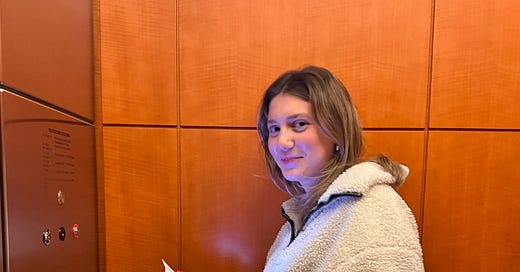If you've been following our journey, you know that navigating Samantha’s health has been like trying to solve a puzzle where the pieces keep shifting…just when we think we’ve got a corner done, a whole new section opens up.
This week, we learned more about her kidney tumor, and it’s led us into deeper and more complicated territory.
The Pathology Report: A New Layer
Samantha’s tumor (which we already knew was malignant) came back with a few findings that caught the pathologist’s attention. Not just because it was cancer (which, on its own, is already so much to process), but because the tumor didn’t look like your typical renal cell carcinoma.
The tissue had a pattern called fibromyomatous stroma (say that ten times fast), and the cancer cells showed a unique combination of markers (KRT7, CA-IX, and focal KRT20). In plain terms: this tumor doesn’t fit neatly into the usual boxes. Instead, it resembles patterns seen in genetic or “syndromic” cancers, particularly ones associated with mutations in the TSC1 or TSC2 genes, or in the mTOR pathway.
What does this mean? Great question and it’s taken us days to wrap our minds around it and grasp a very basic understanding of what we are seeing.
It means we might not just be dealing with a one-time, isolated tumor. This could be part of something bigger , something inherited, something that has been quietly threading its way through her health all along.
What the Doctors Are Saying
The pathology team recommended germline genetic testing, which looks for mutations present in every cell of the body, the kind you’re born with. The goal is to see whether Samantha’s tumor is linked to a genetic syndrome, like Tuberous Sclerosis Complex (TSC).
TSC is rare, but it explains a lot: it’s a condition where benign (and sometimes malignant) tumors can grow in the brain, kidneys, heart, lungs, and skin.
When You Realize the Puzzle Might Be Genetic
The term doctors use for this is “syndromic.” It means when multiple, seemingly unrelated health issues are actually all part of the same root cause. And in Samantha’s case, it looks more and more like we’re not just managing symptoms anymore, we’re on the edge of discovering why all of this has been happening in the first place.
I asked her doctors what the odds were, how likely it is that she actually has a genetic syndrome like TSC. They gave me a number that’s stuck with me all week: 20–40%. That’s not a sure thing, but it’s not small either.
Moving Forward with Hope (and a Lot of Questions)
We’re still waiting on molecular testing of her tumor. We have a genetics consultation coming up. And we’re walking into this next phase with cautious hope, not because we want another diagnosis, but because knowing what we’re up against means we can finally stop spinning in circles and start building a plan.
In the meantime, we’ve met with the surgical team, and Samantha’s nephrectomy is officially scheduled for May 28th. Her medical team has also ordered an MRI of her brain to check for any independent tumors or signs of metastasis. We're holding tight to hope and praying hard for clear scans today.
If no new appointments pop up this week, Sam and I are planning to head home in the next few days. We are beyond exhausted and so ready to sleep in our own beds, wrapped in the comfort of home and the people we love. Sam plans to return to school to finish out her semester and pack up her dorm before surgery. She’s determined to squeeze in a bit of normalcy before we head into the next phase.
If you’re a parent who’s been through this, the maze of specialists, the “maybe it’s nothing” moments that later become everything…I see you. And if you’ve ever felt like no one was connecting the dots, I want you to know: sometimes the dots do connect. It just takes time. And one really smart team of doctors who don’t give up.
I’ll keep sharing as we learn more. 💛





Many prayers to you all
Can’t pray enough for you all 🙏🙏🙏❤️❤️❤️ so very strong 💪 so positive!!! You’re Awesome and You Got This!!! 🙌🙌🙌